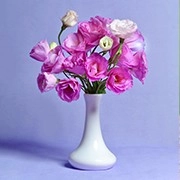Keys and Culture


Hey Lykkers! Let’s talk music—not just what you hear, but what you feel. Have you ever listened to a soft piano melody and felt instantly calm? Or heard the joyful bounce of an accordion and suddenly imagined a bustling European street corner?
That’s because instruments don’t just create sound—they carry culture, history, and emotion.
Today, we’re diving into two beloved instruments from very different worlds: the piano and the accordion. They might both have keys, but their differences go far deeper than appearance.
Structure and Play Style
- Piano: A large, stationary instrument with 88 keys. Sound is produced by felt hammers striking strings inside the wooden frame. It’s played by sitting and using both hands to press the keys.
- Accordion: A portable instrument played by expanding and compressing a bellows while pressing keys or buttons. It combines a keyboard (or buttonboard) with a reed system that vibrates to produce sound.
Sound & Range
- Piano: Known for its dynamic range and expressive power—from whisper-soft notes to dramatic crescendos. Great for classical, jazz, pop, and more.
- Accordion: Has a distinct reedy, vibrant tone. Often used in folk, tango, polka, and traditional music around the world.
Mobility
- Piano: Not exactly backpack-friendly. It’s heavy, stays in one place, and often forms the centerpiece of a concert hall or living room.
- Accordion: Designed for movement. It’s played standing, sitting, or strolling through a crowd—perfect for street performances or dances.
Cultural Roots and Meanings
Piano: The Voice of Elegance
The piano has long been associated with refinement, education, and emotional depth. In Europe, it was a must-have in upper-class homes. Composers like Beethoven, Chopin, and Mozart used it to express emotion and complexity, making it the gold standard of Western classical music.
Even today, it symbolizes sophistication, discipline, and creative exploration. In modern times, the piano has crossed genres—from pop ballads to jazz improvisations and cinematic scores. Wherever it’s heard, the piano carries a sense of gravity and emotional honesty.

Why It Matters
Understanding the difference between these instruments isn’t just about mechanics—it’s about connecting with the cultures they represent. The piano brings you into a world of introspection and emotion, while the accordion invites you into a circle of dancing feet and laughing voices.
Final Note
So next time you hear a gentle piano solo or a lively accordion tune, listen a little deeper. You’re not just hearing music—you’re stepping into a tradition, a culture, and a story that’s been told for centuries through sound.
Let me know if you'd like a follow-up article on how these instruments are used in different countries or genres!

 · Art team
· Art team